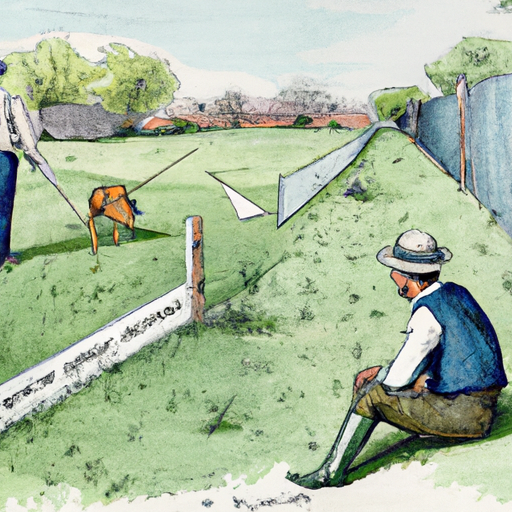Understanding the Need to Protect your Lawn
In your role as a caregiver, not only to your family but also to your beloved pets, you understand the importance of maintaining a safe, comfortable environment for everyone involved. Your garden, brimming with lush, green grass, is no different. However, your canine companions may not understand the effort you put into cultivating that new set of grass. They see an open playground, not knowing the damage they may be causing.
The Art of Canine Deterrence
In the fine dance of deterring your dog from trampling over your fresh grass, it’s important to remember that your canine friend is not the enemy. This is about guiding them to behave in a way that supports your efforts, not penalizing them for their natural instincts.
- Fencing: A simple, yet effective deterrent is to erect a temporary, light-weight fence around the newly sown area.
- Scarecrows: Not just effective for birds, a scarecrow can also keep your dog at bay.
- Odor Repellents: Dogs have a keen sense of smell. Certain natural odors such as vinegar or citrus can deter them.
Providing Alternatives
Redirecting your pet’s energy towards a more constructive outlet can be a win-win situation. Not only does your new grass get the necessary breathing room, but your dog also gets a new way to spend their energy.
- Play Area: Dedicate a specific area of your garden as the dog’s play area.
- Dog Toys: Invest in some outdoor dog toys that your pet can use.
Training your Dog
While physical barriers and deterrents can be effective, nothing beats a well-trained dog who understands boundaries.
| Training Method | Description |
|---|---|
| Boundary Training | Teach your dog to stay within certain boundaries |
| Positive Reinforcement | Reward your dog for staying off the new grass |
| Consistency | Consistency is key in any training regime |
It’s worth mentioning that patience and consistency are your best allies in this endeavour.
Maintenance and Monitoring
Finally, remember to consistently monitor your new grass and the effectiveness of the deterrents you’ve put in place. This allows you to make necessary tweaks and changes to ensure optimal growth for your grass and a happy, well-adjusted pet.
FAQs
Q: How long should I keep the deterrents up?
A: This largely depends on how quickly your new grass grows. Generally, 4-6 weeks is a good rule of thumb.
Q: Will the odor repellents harm my dog?
A: No. The recommended odors are natural and non-toxic to dogs. They simply find the smell unpleasant.
Q: Can I use multiple deterrents at once?
A: Absolutely. In fact, a multi-pronged approach can often be more effective.
Q: Does boundary training work for all dogs?
A: While most dogs can learn boundary training, the ease and speed at which they learn can vary based on breed, age, and individual personality.



